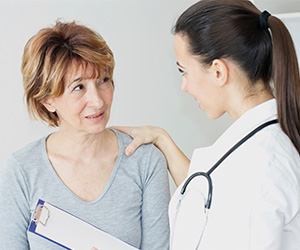Nicola Davies-Laubscher takes a look at some illnesses more prevalent among women
 This is the most common women’s mental-health problem. It’s believed that one in five women will develop depression at some stage in their lives, compared to roughly one in 10 men. Before adolescence, the rates of depression among girls and boys are about the same, but by the age of 11, a gradual shift starts and, by age 15, girls are twice as likely to suffer from depression.
This is the most common women’s mental-health problem. It’s believed that one in five women will develop depression at some stage in their lives, compared to roughly one in 10 men. Before adolescence, the rates of depression among girls and boys are about the same, but by the age of 11, a gradual shift starts and, by age 15, girls are twice as likely to suffer from depression.
Hormones are largely to blame for this disparity, with most women experiencing a multitude of drastic hormonal fluctuations during their lifetime, including menstruation, pregnancy, childbirth and finally menopause. Women appear to be particularly vulnerable to the onset of symptoms during childbearing years, with their highest risk for the illness arising during pregnancy and shortly after childbirth.
Migraine headaches
An average of three out of four migraine sufferers are women and about one in four women will experience a migraine somewhere along the line. This type of headache is an intense, throbbing pain in one or sometimes both sides of the head, often accompanied by vomiting and nausea or a sensitivity to light and sound. Symptoms can vary from person to person and also from one attack to the next.
Many groups of people are genetically predisposed to migraines, but they can also be triggered by a lack of good rest, bright lights, loud noises, strong odours, stress and anxiety, alcohol (especially red wine) and possibly certain foods (chocolate and cheese, for example).
Hormonal fluctuations seem to be the main culprit for why more females than males experience migraines. Before reaching puberty, migraines are slightly more common in boys than girls, but once girls begin to menstruate, their migraines increase dramatically. Lying down in a dark, quiet room or placing a cold facecloth on your forehead can alleviate the symptoms. Ask your doctor if they can prescribe medication or recommend a good over-the-counter product to alleviate the migraine.
Urinary tract infections
Urinary tract infections (UTIs) are 10 times more prevalent among women than men. UTIs are caused by bacteria and about 60% of women will deal with at least one UTI during their lifetime.
The common symptoms include pain or burning during urination, the need to urinate more often than usual (even though you may only pass a few drops at a time), blood found in urine, cramps and pressure in your lower belly, chills or a fever, as well as pungent or cloudy urine.
If you suspect that you have a UTI, it’s best to consult your doctor. They will test a urine sample for the presence of UTI-causing bacteria and prescribe a course of antibiotics, if necessary.
Try the following to prevent UTIs:
• Drink plenty of water and further up your intake when exercising
• Eat more fibre – UTIs are associated with constipation
• Always empty your bladder after sex to flush out bacteria
• Wear underwear made from breathable fabric – cotton is perfect
• Always wipe front to back when you urinate
• Stop using any product that irritates the delicate skin in the area
Breast cancer
This might seem obvious, but bear in mind that breast cancer can also occur in males (it accounts for 1% of all cases).
This type of cancer develops in the breast tissue and signs may include a lump in the breast or under the armpit, changes in the breast shape or position of the nipple, dimpling of the breast skin, fluid or blood leaking from the nipple, and any unusual discolouration of skin on the breast.
Treatment will depend on the type and stage of the cancer, and whether you have experienced menopause yet. Treatment options can include surgery, as well as radiotherapy, chemotherapy and hormone therapy.
Early detection is key:
• Know what is normal for your breasts
• Check your breasts regularly for any of the above signs
• Immediately report any changes in shape or texture to your doctor
• Schedule a mammogram every two years if you’re older than 40 (earlier if you have a family history of breast cancer)
Irritable bowel syndrome
Irritable bowel syndrome (IBS) is a type of gastrointestinal disorder that affects about twice as many women as it does men. It is a long-term condition (presenting for at least three months). Its symptoms can include cramping, bloating, gas, mucus in stool and alternating bouts of diarrhoea and constipation.
There is no definitive test that will determine if you have IBS, but your doctor will likely recommend that you go for a colonoscopy to make sure your symptoms are not caused by something more serious, such as colorectal cancer.
Symptoms are usually treated with changes in diet, medication (including probiotics), exercising regularly and stress relief. Certain foods can aggravate IBS symptoms. These include milk and other dairy products, caffeinated drinks such as tea and coffee, fizzy cooldrinks, alcohol and some vegetables that generally lead to excessive gas, such as broccoli, garlic, onions and beans.







